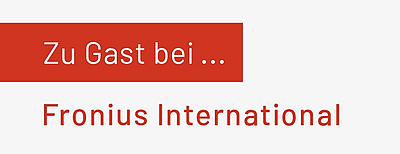Welcome at the Interface Culture program website.
Acting as creative artists and researchers, students learn how to advance the state of the art of current interface technologies and applications. Through interdisciplinary research and team work, they also develop new aspects of interface design including its cultural and social applications. The themes elaborated under the Master's programme in relation to interactive technologies include Interactive Environments, Interactive Art, Ubiquitous Computing, game design, VR and MR environments, Sound Art, Media Art, Web-Art, Software Art, HCI research and interaction design.

The Interface Culture program at the Linz University of Arts Department of Media was founded in 2004 by Christa Sommerer and Laurent Mignonneau. The program teaches students of human-machine interaction to develop innovative interfaces that harness new interface technologies at the confluence of art, research, application and design, and to investigate the cultural and social possibilities of implementing them.
The term "interface" is omnipresent nowadays. Basically, it describes an intersection or linkage between different computer systems that makes use of hardware components and software programs to enable the exchange and transmission of digital information via communications protocols.
However, an interface also describes the hook-up between human and machine, whereby the human qua user undertakes interaction as a means of operating and influencing the software and hardware components of a digital system. An interface thus enables human beings to communicate with digital technologies as well as to generate, receive and exchange data. Examples of interfaces in very widespread use are the mouse-keyboard interface and graphical user interfaces (i.e. desktop metaphors). In recent years, though, we have witnessed rapid developments in the direction of more intuitive and more seamless interface designs; the fields of research that have emerged include ubiquitous computing, intelligent environments, tangible user interfaces, auditory interfaces, VR-based and MR-based interaction, multi-modal interaction (camera-based interaction, voice-driven interaction, gesture-based interaction), robotic interfaces, natural interfaces and artistic and metaphoric interfaces.
Artists in the field of interactive art have been conducting research on human-machine interaction for a number of years now. By means of artistic, intuitive, conceptual, social and critical forms of interaction design, they have shown how digital processes can become essential elements of the artistic process.
Ars Electronica and in particular the Prix Ars Electronica's Interactive Art category launched in 1991 has had a powerful impact on this dialog and played an active role in promoting ongoing development in this field of research.
The Interface Cultures program is based upon this know-how. It is an artistic-scientific course of study to give budding media artists and media theoreticians solid training in creative and innovative interface design. Artistic design in these areas includes interactive art, netart, software art, robotic art, soundart, noiseart, games & storytelling and mobile art, as well as new hybrid fields like genetic art, bioart, spaceart and nanoart.
It is precisely this combination of technical know-how, interdisciplinary research and a creative artistic-scientific approach to a task that makes it possible to develop new, creative interfaces that engender progressive and innovative artistic-creative applications for media art, media design, media research and communication.
forum Dialog
15. Mai 2025, Abfahrt 8.15 Uhr Treffpunkt: alter Busbahnhof, Bahnhofplatz 14, Linz
wir sind zu Gast bei Fronius International bei den Absolvent*innen Christoph Breiner, Thomas Parzer, Siegmund Petermandl, Horst Scheiböck, Katharina Speiser, Micha Taitl und Helen Trivick-Randall
Fronius wurde 1945 als Ein-Mann-Betrieb gegründet und ist heute ein international tätiges Unternehmen mit über 7.000 Mitarbeitenden, einem Exportanteil von 85 % und mit 38 Tochtergesellschaften und
Vertriebspartnern in mehr als 60 Ländern vertreten.
Die Firma - im Kern immer noch ein Familienunternehmen - entwickelt Produkte und Lösungen im Bereich Photovoltaik, Schweiß- und Batterieladetechnologie und bietet umfassende Lösungen von der Planung bis zum Service. Der Hauptsitz befindet sich in Pettenbach, weitere Standorte sind Sattledt, Wels, Thalheim, Wien und Graz.
Wir besuchen die Alumni Christoph Breiner (Visuelle Kommunikation), Thomas Parzer und Siegmund Petermandl (beide visuelle Mediengestaltung), Horst Scheiböck (experimentelle Visuelle Gestaltung), Katharina Speiser (Mediengestaltung Grafik-Design), Micha Taitl (Industriedesign) und Helen Trivick-Randall (Medienkultur- und Kunsttheorien).
Im Gespräch stellen sie sich und ihre Arbeit vor und berichten über ihren Werdegang.
Eine anschließende Betriebsbesichtigung rundet die Veranstaltung ab.
Programm im Detail
08.15 Uhr Abfahrt vom alten Busbahnhof Linz, Bahnhofplatz 14
09.00 Uhr Begrüßung beim Empfang, Fronius Strasse 5, Sattledt
Gespräch und Austausch mit den Absolvent*innen
10.00 Uhr Betriebsbesichtigung
11.45 Uhr Rückfahrt nach Linz, alter Busbahnhof, Bahnhofplatz 14
aufgrund der Sicherheitsbestimmungen im Werk ist eine Anmeldung bis 14. Mai 2025 erforderlich: https://forms.office.com/e/B8R4MZfK4Q


